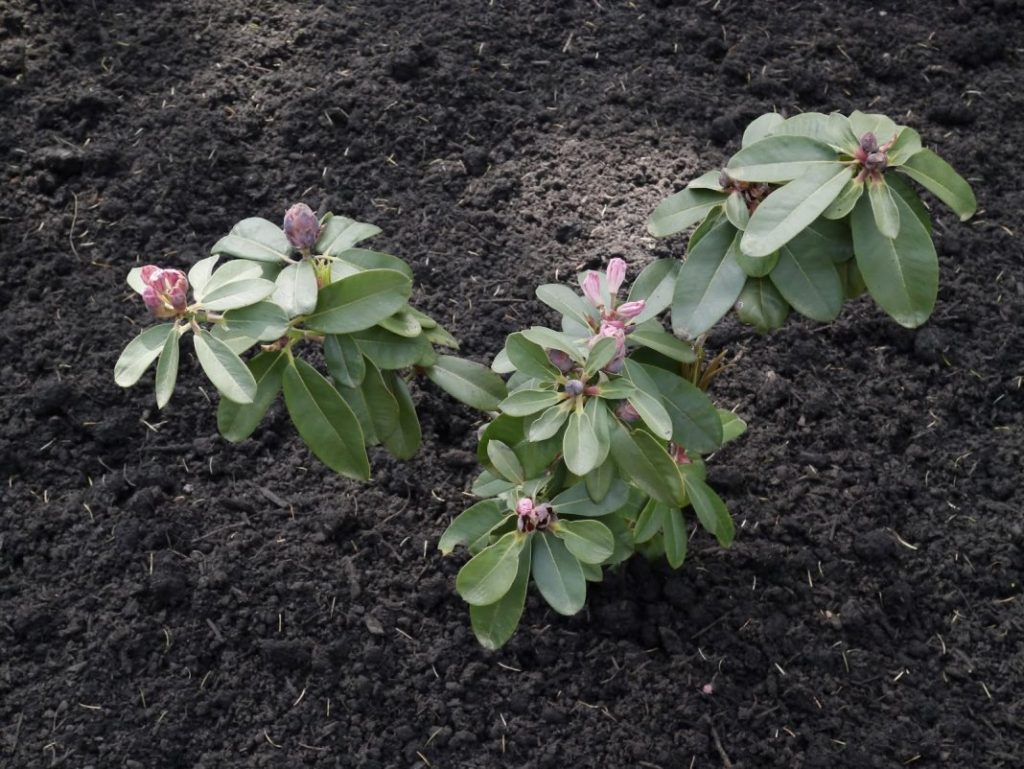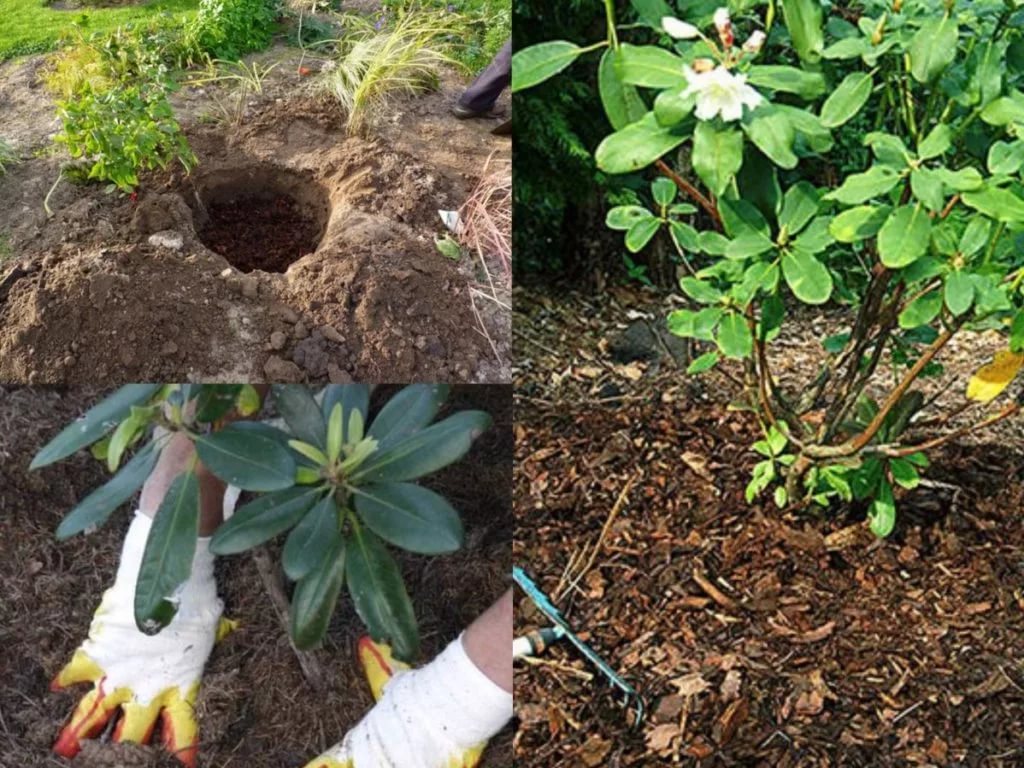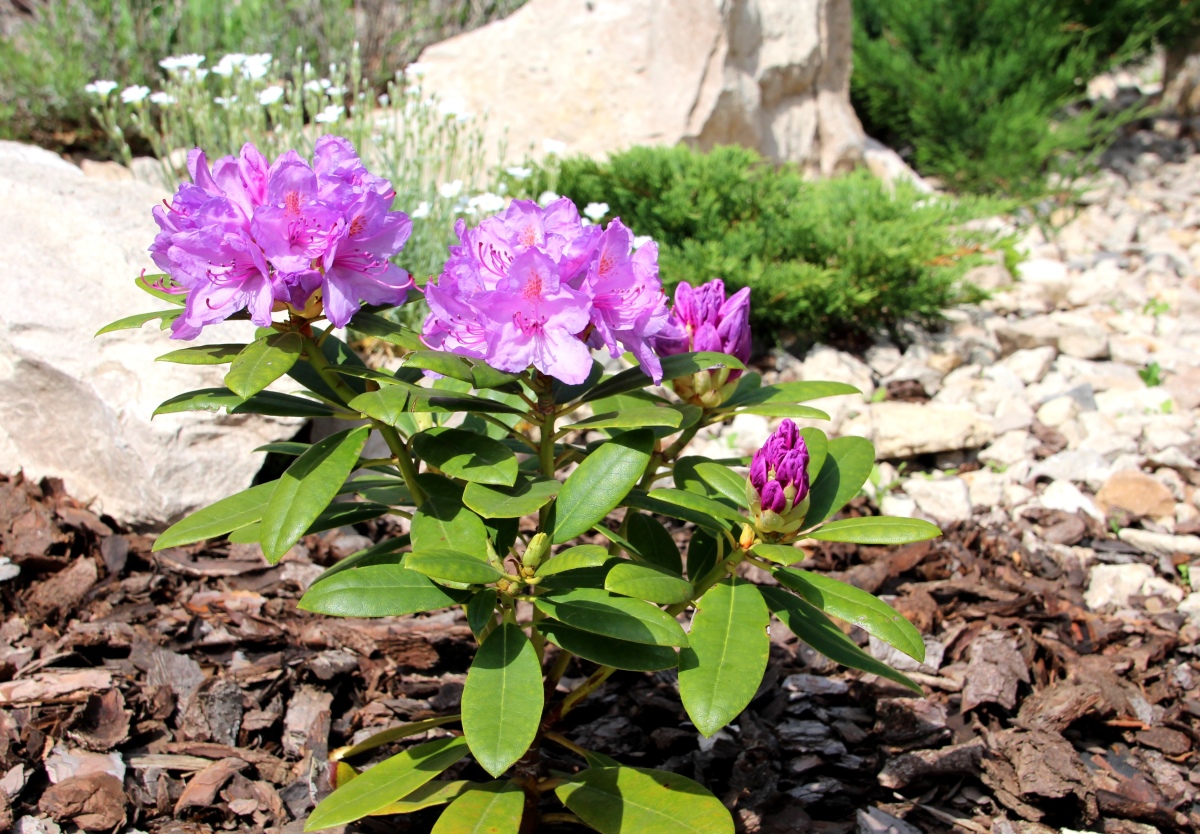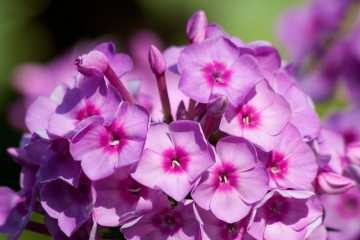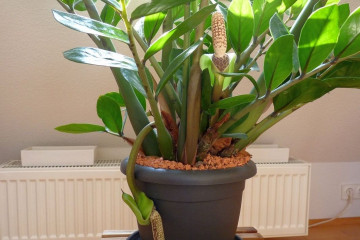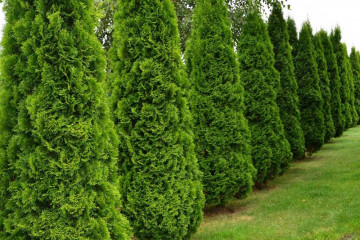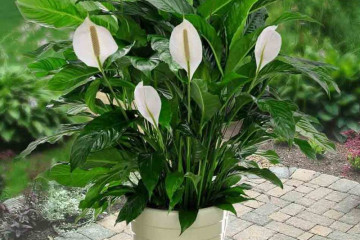Transplanting a rhododendron from one place to another
Content:
Rhododendrons are not very large shrubs, distinguished by the extraordinary beauty of flowers that can decorate any area. They are quite unpretentious, shade-loving and resistant to moderate cold. For good growth and development of such a shrub, it is necessary to follow the simple rules of care, pruning and feeding, and also occasionally transplant the plant. The correct transplant is an important, but not very difficult process, if you know all the subtleties and nuances.
Rhododendron transplant in spring and autumn: which is better
Transplanting rhododendron bushes to a new place or the first planting is performed both in spring and autumn. Of course, some simple rules must be followed.
- In spring, a rhododendron transplant is carried out, depending on the region of growth, from April to May. In warmer places, a little earlier (Middle zone), and in colder places - a little later (Siberia, Urals, etc.).
- In autumn, it is better to transplant between September and mid-October in order to catch up with the first frost.
- Deciduous shrubs are best planted or replanted only in the spring so that they can take root well and survive the winter.
- In conditions of strong temperature changes and the presence of extremely low temperatures, it is also better to transplant and plant in the spring, for better adaptation to the climate.
How to choose a place for a transfer
Rhododendrons have a superficial root system and do not tolerate excess moisture, therefore, it is absolutely impossible to plant them in places with stagnant groundwater, in lowlands or wetlands. It is also worth considering that the shrub is quite shade-loving, so the northern or eastern side of the site will be the optimal landing site, without direct midday sun rays.
A good solution would be to plant bushes under the canopy of taller trees, but only with a deep, taproot system, otherwise the rhododendron will not have enough nutrition. Best of all, the plant is adjacent to tall conifers.
On the question of whether it is possible to plant rhododendrons in the sun: this planting option is possible, but only on the condition that direct sunlight from 11 am to 4 pm will not fall on the plant. Only diffused light or light shading will suit the rhododendron. At the same time, deciduous varieties prefer more sunlight than evergreens.
An open area with prevailing winds, as well as places near buildings where there are frequent drafts, will be a bad place for planting - if the plant does not suffer much from this in summer, then in winter there is a great risk of freezing out the bush.
Preparation of soil and containers for transplant
It is very important to consider what kind of soil the rhododendron likes: acidic soils with a pH of 3 to 4.5 are preferred. The best solution would be peat soil, but you can also prepare the substrate yourself. The main criteria are good air permeability and drainage, therefore it is important to ensure good looseness of the soil.
Depending on the type of soil on the site, the substrate is made in various ways:
- for loam, a mixture of high peat, humus, pine needles and garden soil itself is well suited, while the proportion of peat should be greater;
- for sandy soils, a portion of loam, peat and humus increases.
One of the best soil mixtures for rhododendrons, regardless of the characteristics of the main soils - moor peat, humus, needles and sand in a ratio of 3: 2: 1: 1. It is not superfluous to add about 40 grams of mineral fertilizers to it and mix thoroughly.
If the transplant is carried out not into open ground, but into the planting tank, it is necessary to choose its size based on the current size of the root ball, + 20-30% of the volume. This allows the continued development of the root system. It is important to ensure good drainage to avoid stagnant water and root rot.
Choice of neighbors and distance when transferring
In order for the bushes to grow and develop well, it is necessary to choose the right place with favorable "neighbors".
The ideal neighborhood would be to plant next to conifers such as larch, spruce or pine. On the garden plot, apple trees, cherry trees, pears and oaks will become a good neighborhood.
Another aspect to consider when planting is the distance between rhododendrons and their neighbors. So, it is necessary to retreat from buildings at least one and a half meters, from large trees and shrubs - at least 2 meters. Between the bushes themselves, a distance of 1.5-2 meters should be maintained.
How to transplant a rhododendron to a new location
First of all, it is necessary to dig a suitable planting hole for the rhododendron: its depth should be about 30-50 cm, depending on the size of the root system, and the width should be 50-80 cm.A drainage layer is poured at the bottom of the hole, then the seedling is tried on: that the root collar of the plant cannot be sprinkled with earth, so it should rise 3-5 cm above the total surface of the earth.
Before transplanting the rhododendron bush to another place, it is necessary to moisten the root system abundantly: if the root ball is dry enough, then it should be placed in a container of water for an hour or two, until air bubbles stop rising from the roots.
The finished drained hole is spilled with water to shrink the soil, then a bush is planted in it and covered with a prepared substrate. The plant is watered abundantly in the near-stem circle - if the soil shrinks, then the substrate is poured to the required level.
Second transfer to a permanent place
Rhododendrons tolerate transplants well, both in the first years of life and at a more mature age. Usually, after growing a small bush at home, the plants are planted on a common ridge for growing and gaining strength, and already at 3-4 years of age they are planted in a permanent place of growth.
Regardless of the number of transplants, the general requirements for them are the same, so any manipulations are performed according to the standard algorithm.
How to feed the plant
When a rhododendron is transplanted, a small amount of mineral fertilizers is already added to the soil mixture. The next feeding is done 3-4 weeks after planting, when the plant takes root.
In the spring, before flowering, plants are fertilized with organic mixtures - blood meal, half-rotted cow dung or horn meal.You can infuse manure in water for 3-4 days, and then water the soil around the bushes with the resulting slurry, but first it is good to moisten the ground with plain water.
Mineral fertilizers that do not contain chlorine - superphosphates, nitric, phosphoric and sulfate substances, such as potassium, calcium, ammonium, magnesium - have a good effect on the growth and development of the shrub.
Difficulties and problems
With a competent approach, no difficulties should arise, especially if you take into account the timing when you can transplant the rhododendron from one place to another, and the locations of the bushes themselves.
A common difficulty for gardeners is also often digging a bush from a familiar place, so it is better to follow some simple tips:
- thoroughly moisten the soil before starting to dig up the plant;
- carefully loosen the ground with a pitchfork or rake with an indent from the base of the bush up to 80 cm;
- dig the soil with a pitchfork in a circle 100 cm from the root collar and to a depth of 30-40 cm.
Such a scale is taken in order not to damage the superficial and widely spreading roots of the shrub. After that, the bush can be carefully removed from the ground and transported to a new planting site. If there are dried roots, they can be cut off, but the main thing is not to deprive the root system of the usual earthen coma.
When can a rhododendron be transplanted to another location? If it has grown a lot or needs more favorable conditions, or it can be just at will. Different types of rhododendrons are the same in one thing - they are not afraid of transplantation, and if you follow a simple technology, the plants will remain grateful and will delight you with lush flowering for a long time.

